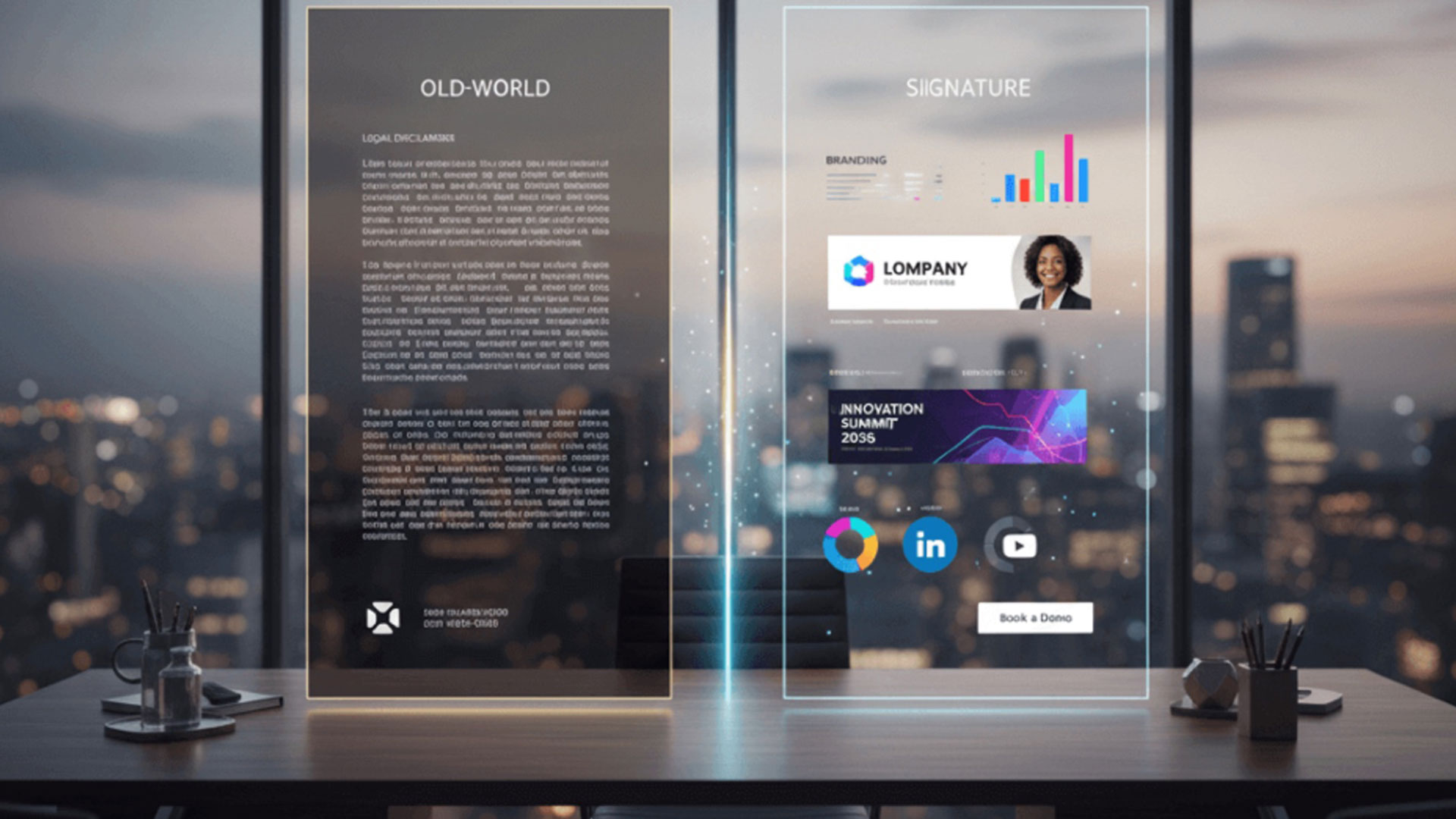Types of Cold Outbound Marketing Campaigns (And When to Use Each One)
.jpg)
In an age where inboxes are overflowing, phone calls are screened, and privacy regulations are tightening, you’d be forgiven for thinking cold outreach has lost its edge. But the truth? Cold outreach still works—when it’s smart, strategic, and adapted to today’s communication habits. Businesses that thrive know how to cut through the noise by using the right message on the right channel at the right time.
Reaching out to new prospects or reconnecting with past ones requires a solid understanding of how each outreach channel works. With Crossware’s support, you can turn that knowledge into measurable results. Let’s break down the top cold outreach channels, how they work, when to use them, and how they can complement each other in a powerful multichannel approach.
SMS: Super High Open Rates, But Heavily Regulated
.jpg)
Cold outbound marketing campaigns involve initiating contact with potential customers who haven't interacted with your brand before. These campaigns aim to generate interest, start conversations, and move prospects through the sales funnel using channels like email, phone calls, or social media outreach.
SMS is the dark horse of cold outreach. Often underestimated, text messaging boasts open rates as high as 98%, with most messages read within 3 minutes of receipt. It’s direct, personal, and hard to ignore, making it incredibly powerful in the right context.
While the brevity of SMS can be its strength, it also places a premium on crafting the perfect message. With limited characters to get your point across, every word must serve a purpose. Think of SMS as your elevator pitch—clear, compelling, and to the point. Use emojis or links sparingly, and make sure there's a direct call to action that prompts an immediate response.
When to Use SMS
The magic of SMS lies in post-opt-in reconversion. If someone has already interacted with your business—signed up for a webinar, downloaded a resource, or previously requested a quote—they’re fair game. This isn’t the place to send a “cold hello.” Instead, use SMS for:
- Reminders (e.g., appointments, consultations, demos)
- Time-sensitive promotions
- Event follow-ups
- Re-engagement with dormant leads
The Catch
SMS is heavily regulated under laws like the TCPA (in the U.S.) and GDPR (in the EU). That means you can’t blast messages to purchased lists or random numbers. You need explicit opt-ins, easy opt-outs, and compliant storage of consent records.
Pro Tip
Use SMS to support your call or email campaigns, not replace them. A well-timed text after an unopened email can lift conversion rates substantially. Just be respectful of frequency—one annoying message can get you blocked forever.
Email: Scalable and Measurable
Email is the backbone of cold outreach, and it still reigns supreme for a reason. It’s low-cost, easily automated, and scalable across sales development teams. But cold email today isn’t about blasting the same message to 5,000 people. It’s about relevance, personalization, and strategy.
Modern cold email platforms now offer smart scheduling and inbox rotation, allowing teams to send hundreds of emails per day without triggering spam filters. These tools can stagger delivery, personalize each message dynamically, and even pause sending when engagement metrics drop, giving your outreach a more natural, human rhythm. Integrating these capabilities into your workflow ensures greater deliverability and more meaningful conversations.
When to Use Email
.jpg)
Email is perfect for Account-Based Marketing (ABM) and multi-touch outreach sequences. Whether you’re introducing your company, following up after an event, or moving a prospect through your pipeline, email gives you the space to:
- Share useful content
- Include case studies or social proof
- Track opens, clicks, and replies
- A/B test subject lines and CTAs
The Email Evolution
Cold email today is smarter than ever. Tools like mail merge, personalization tokens, and AI-generated content make outreach faster and more relevant. But none of it matters if your emails don’t look professional. That’s where Crossware email signature comes in.
Consistency Matters
Cold outbound efforts are typically handled by Sales Development Representatives (SDRs) or Business Development Representatives (BDRs). These roles specialize in prospecting and initiating contact with potential buyers who haven’t expressed prior interest.
SDRs usually focus on qualifying inbound leads or executing high-volume cold outreach—think email sequences and cold calls. BDRs often take a more strategic approach, targeting key accounts or industries with personalized outreach and account-based tactics.
When your SDRs and BDRs are sending hundreds of emails a day, brand consistency often falls apart. Some reps use outdated logos. Others tweak signatures. Suddenly, your company starts to look sloppy—and that impacts trust.
That’s where Crossware comes in. It ensures every single email across your organization has a professionally branded, compliant, and on-brand signature. Whether your reps are using Outlook or Microsoft 365, your branding remains intact. Better brand presence, better engagement.
Cold Calling: Still Effective for High-Ticket Sales
Cold calling gets a bad rap, but it’s far from dead. In fact, in high-value B2B sales, it’s one of the most effective ways to create real conversations. Unlike email or SMS, a phone call is interactive—you can handle objections, ask qualifying questions, and build rapport in real time.
Beyond the initial conversation, cold calling is an opportunity to gather valuable real-time feedback. By actively listening to prospects’ objections, needs, or questions, sales reps can refine their pitch and better qualify leads. This level of direct interaction not only shortens the sales cycle but also uncovers hidden buying signals that digital channels may miss.
When to Use Cold Calling
Cold calling shines when:
- You’re selling a high-ticket product or service
- Your sales cycle is long and consultative
- You need real-time engagement or discovery
- You’re targeting decision-makers in small to mid-sized companies
How to Make It Work
The secret to successful cold calling is preparation. Don’t call blind. Use insights from LinkedIn, company websites, and past activity to personalize your pitch. Open with value, not a sales pitch. Keep it short, conversational, and focused on solving a pain point.
Always Pair With Email
Even the best cold call can be forgotten. That’s why it should always be followed by a personalized email recapping the call or introducing yourself if you couldn’t get through. And again, Crossware makes sure those follow-ups look sharp, polished, and trustworthy.
Postcards / Direct Mail: Old School, But It Works
Yes—physical mail is making a comeback in cold outreach, especially in niche industries or retargeting campaigns. Why? Because almost nobody else is doing it. That makes it stand out.
In a digital-first world, the rarity of direct mail gives it a powerful psychological edge. Recipients often perceive mailed content as more thoughtful and deliberate compared to mass digital communications. Whether it's a creatively folded brochure, a branded gift box, or a handwritten card, these physical elements can convey sincerity and effort, building a deeper sense of connection that digital touchpoints alone may not achieve.
When to Use Direct Mail
Postcards and branded mailers work especially well when:
- You’re targeting C-level executives who are flooded with digital messages
- Your audience is in traditional or regulated industries (e.g., construction, finance, manufacturing)
- You’re retargeting warm leads who went cold
- You want to create a memorable brand impression
The Personal Touch
Today’s tech allows for hyper-personalized mailers. Variable data printing can insert the recipient’s name, company, or even recent activity into a beautifully printed piece. Pair that with a QR code or personalized URL to drive them back to your digital funnel.
Combine with Digital
Send a postcard first, then follow up with an email: “Just sent you something in the mail—did it arrive?” This triggers curiosity and opens the door for a digital response. Cold outreach works best when channels support each other, not compete.
LinkedIn DMs & Personalized Video: Warm Up a Cold List Fast
If email is your bread and butter, LinkedIn is your appetizer. It’s the perfect place to start building rapport before a pitch. And when combined with video, it becomes one of the most disarming and engaging cold outreach strategies available.
LinkedIn also offers valuable data points that can help you tailor your messaging with precision. From job changes and shared group memberships to recent posts and activity, every interaction provides insight into what matters to your prospects. By engaging with their content or referencing mutual interests, you create natural entry points for conversation, setting the stage for a warm and productive follow-up.
When to Use LinkedIn Outreach
Use LinkedIn DMs and personalized video when:
- You’re targeting white-collar professionals or executives
- You have mutual connections or group memberships
- You want to warm up cold leads before other touchpoints
- You’re in a relationship-driven industry like consulting or B2B services
Why Video Works
A 30-second custom video message—shot on your phone or webcam—can generate 300% more replies than a plain text message. It shows effort, builds trust, and humanizes your outreach. It’s ideal for:
- Intro messages
- Demo follow-ups
- Event invites
- Celebrating small wins (e.g., “Congrats on your promotion!”)
Pro Tip
Don’t pitch right away. Connect. Engage. Then offer value. Use LinkedIn to build familiarity, then move the conversation to email or a discovery call. Every channel plays its part in the sequence.
Conclusion: Smart Outreach Uses Multiple Channels—But Consistency Is Key
The most effective cold outreach strategy isn’t choosing one channel over another—it’s knowing how and when to combine them. A campaign might start with a LinkedIn message, followed by a call, then a personalized email, and finally a text reminder. Each touchpoint reinforces the message and builds trust.
But none of this works if your communication looks disjointed, unprofessional, or inconsistent.
Crossware plays a crucial role in strengthening your cold outreach strategy. It provides the tools and insights needed to connect with the right prospects more effectively.
With Crossware Email Signature Management, your SDRs, BDRs, and marketing teams send messages that are always on-brand, no matter who’s sending them. Whether your outreach includes one rep or one hundred, every email signature will carry your brand, your message, and your professionalism.
Multichannel outreach is the future. Make sure your email presence matches the rest of your strategy—polished, professional, and personalized.
Ready to streamline your outreach with professional, compliant email signatures?
Learn more about Crossware today.











